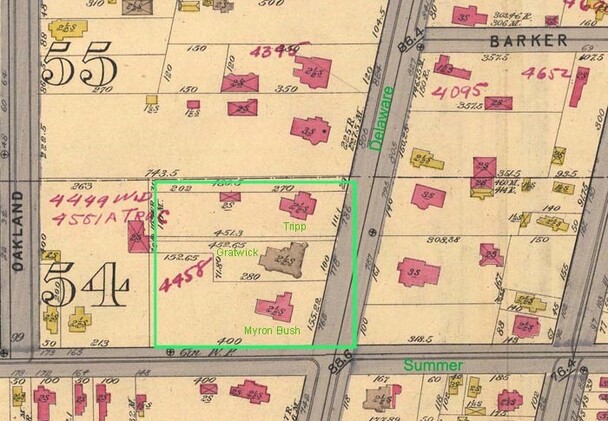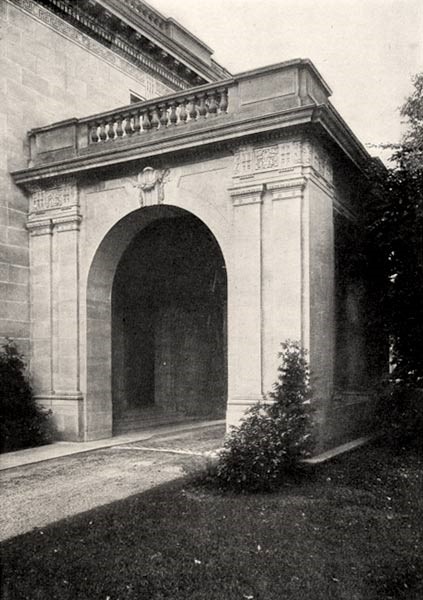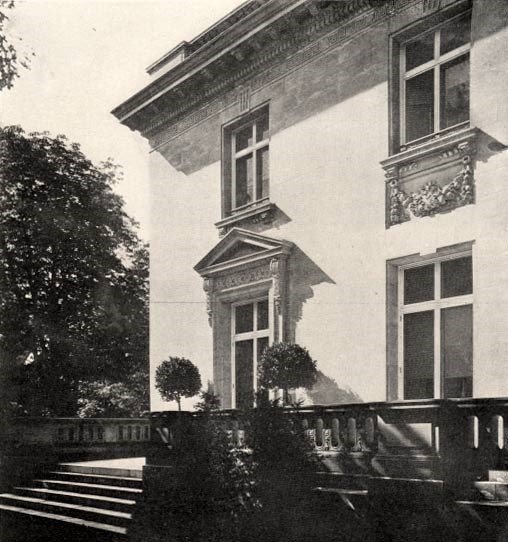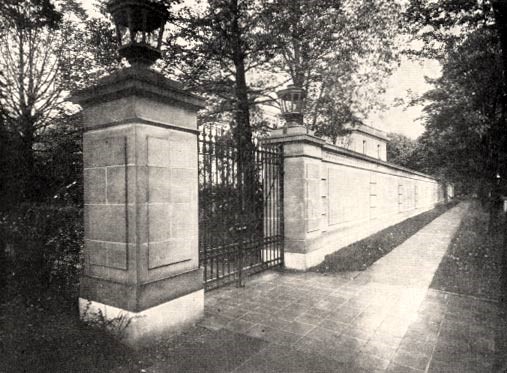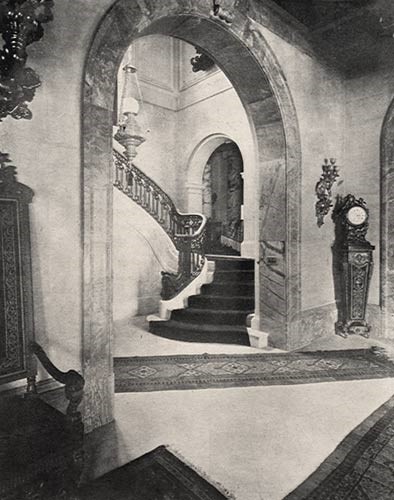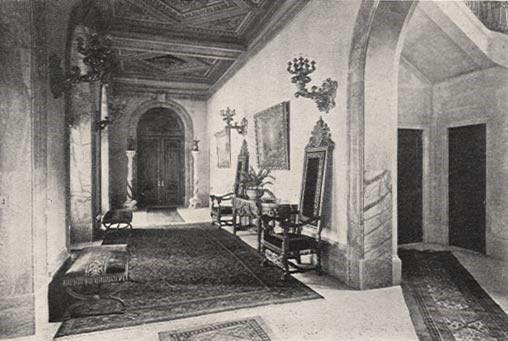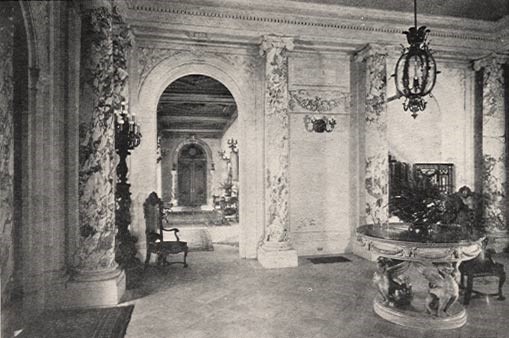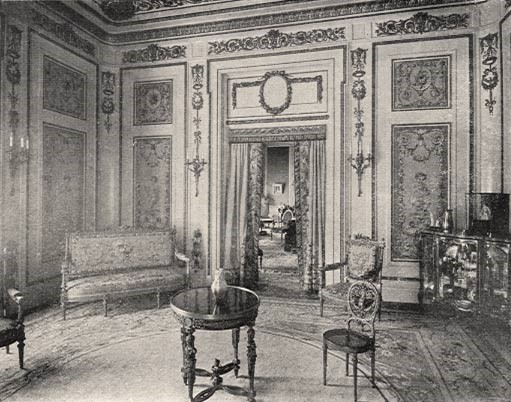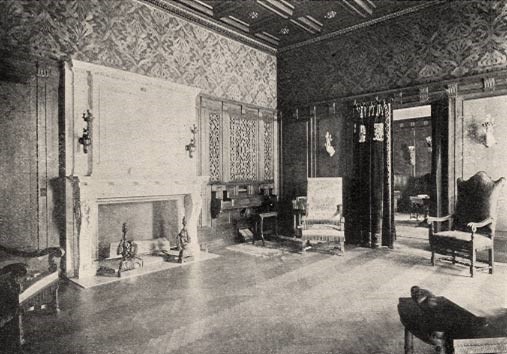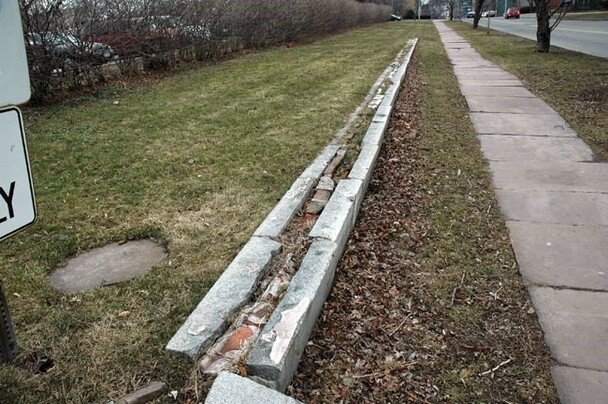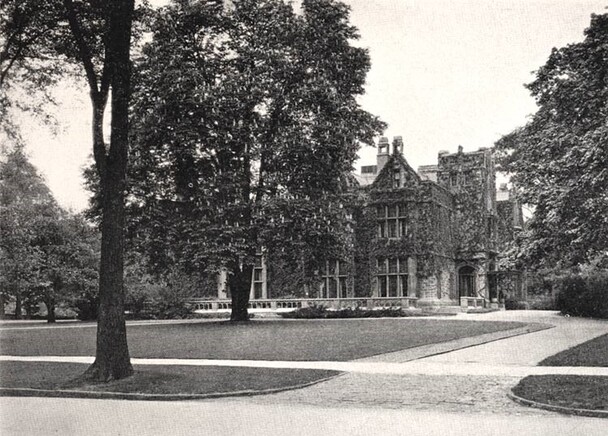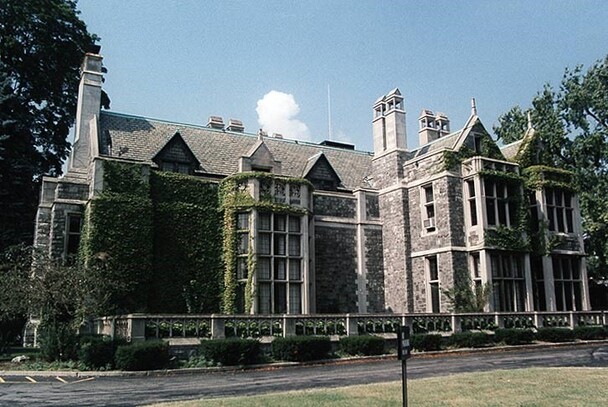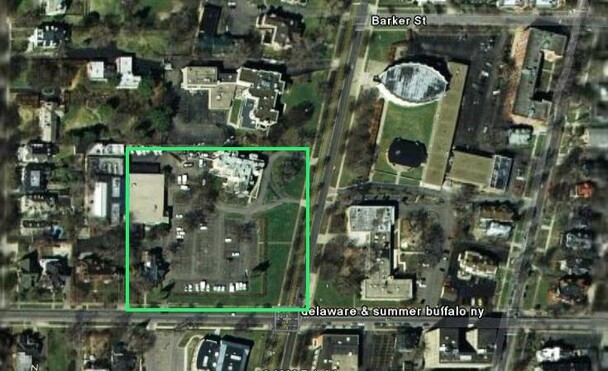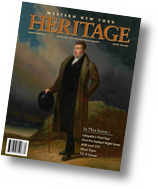The corner of Delaware Avenue and Summer Streets saw a succession of mansion-building. Myron Bush built his mansion in 1859 at the corner, 762. In 1888, William Gratwick hired H.H. Richardson to design what would be Richardson's last building, known as the Gratwick mansion, in 1888. And after the 1850's, Erastus Prosser built his own mansion at 786 Delaware Avenue. When the 1894 atlas above was drawn, Prosser had died and Augustus Tripp owned the home.
The Myron Bush mansion was demolished in 1903 by Frank H. Goodyear, wealthy as a result of his lumber businesses. Goodyear turned over the five-and-a-quarter acre estate to the New York architectural firm of Carrere & Hastings, which designed a palatial
mansion of Indiana Limestone and grounds, divided and surrounded by walls.
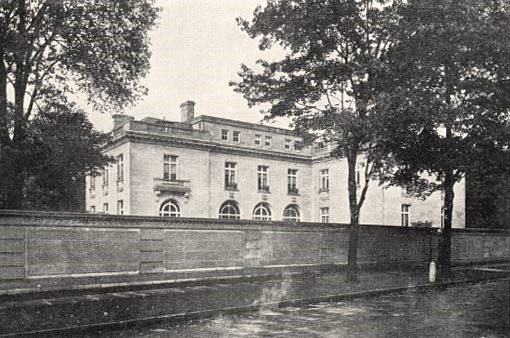
Mansion viewed from Summer Street. Garden and fountains behind the wall. Image source: private collection.
Frank H. Goodyear died in 1907, shortly after moving into his new home at 762 Delaware. His wife, Josephine, lived on until 1915.
Upon her death, Frank H. Goodyear, Jr., moved into the mansion with his wife, Dorothy Virginia Knox Goodyear.
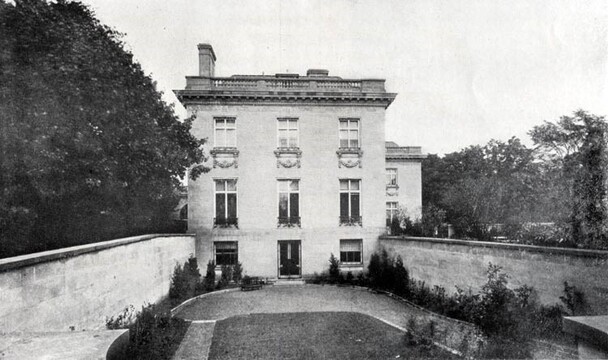
Service court, walled at left from the Delaware Avenue drive, at right from the garden court. Image source: private collection.
The Goodyears were more sociable than Frank Jr's parents had been, and made 763 a great center of entertainment. An excellent athlete, Frank Jr. had the stables extenisvely remodeled with an indoor tennis/squash court on the ground floor and a large party room above.
In 1919, Goodyear and Stephen Clement, who had demolished the Prosser/Tripp mansion at 786 Delaware in 1910 and built his own mansion (see images below), purchased the Gratwick mansion and demolished it. They divided the land between them, creating two
very large estates from sites that had previously been sufficient for three mansions.
"The main rooms of the house are unusually large and are connected with spacious corridors set in marble.
The living room is paneled with carved mahogany and its great fireplace is of marble. Adjoning the living room are a hall with an organ and a reception room only slightly smaller than the living room. On the second floor are six large bedrooms, each with a marble fireplace. The stone, like many of the furnishings, was collected by the elder Mr. Goodyear from all parts of the world." (News, October 10, 1938).
On October 14, 1930, 39-year old Frank Goodyear, Jr. was killed while trying to pass a slower automobile on Transit Road between Broadway and Genesee Streets in his Rolls-Royce. His wife survived the wreck and a year later married Edmund Pendleton Rogers, a widower from New York.
Frank Goodyear's death spelled the beginning of the end of the mansion's life.
Mrs. Rogers and her husband spent no time at 763 Delaware Avenue, and in 1937 the mansion was demolished after no interested buyers came forward in the middle of the Depression. The demolition was very newsworthy and received extensive coverage in the News and Courier.
Mrs. Rogers retained the massive marble mantels and the rest of the fixtures were sold prior to demolition. The marble pillars above were offered for $100 each.
Stained glass was priced at $.50 per foot; a small wall organ for $250; scenic panels, $4; and Renaissance chandeliers, $25.
"Every piece of marble, ornamental iron, rich woodwork and stone which went into the making of the palatial structure... has been sold. Every fragment of pillars and archways, which were fashioned into the famous marble hall of the mansion has been carefully numbered to be removed and delivered to its new owner.
"One of the first things to be removed was the electric elevator. Before the day was over, most of the fixtures had been removed from [the library], including stately mirrors and massive oak doors."
(News, October 11, 1938).
For all the months the mansion had taken to construct, the Buffalo Housewrecking Co. needed only 8 weeks to demolish it. A reporter from the Buffalo Times recorded his observations on October 11, 1938:
"Stripped of its furniture, the house still yields homey touches to the observant shopper. A child's toy cap pistol lies on the shelf of the kitchen cupboard. A broken window in the nursery is boarded up with a Texaco placard and an old-fashioned poster on which awkwardly cut-out figures, probably from the childish hands of one of the Goodyear girls, are pasted.
"The wreckers' hammers soon will crash down on the kitchen's white plaster walls, but in the meantime the scribbled telephone numbers of Larkin's, the American Express Co. and the tennis court still stand out boldly. On the wall of one of the many bedrooms hangs a calendar from which no page has been torn since May, 1931... A forgotten house. A shell of a home. And soon even that shell will be gone."
In 1941, Carolyn Jewett Tripp Clement, widow of Stephen Clement, turned over her mansion to the American Red Cross.
The site of the Goodyear mansion (and the site of the Gratwick mansion) are now parking facilities for the American Red Cross.
Historical information sources for this page included "Buffalo's Delaware Avenue: Mansions & Families," by Edward T. Dunn.
